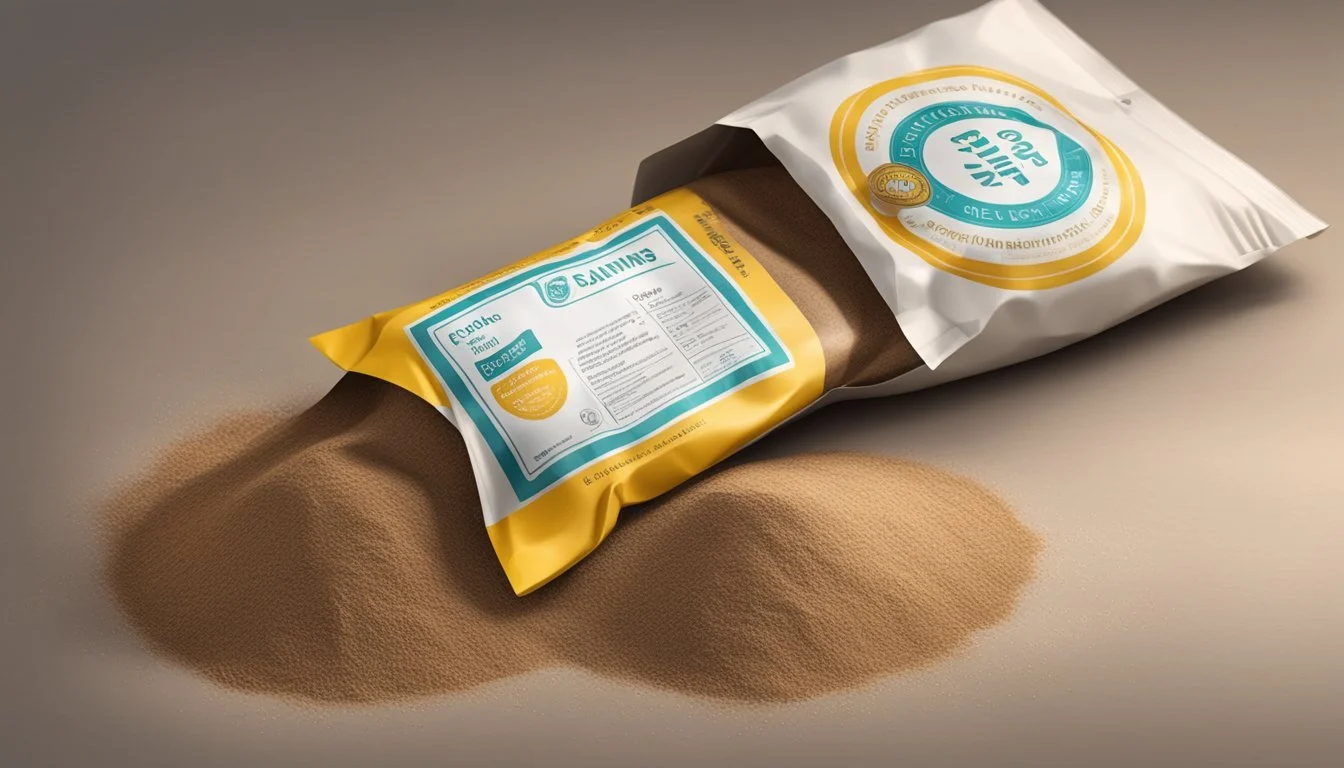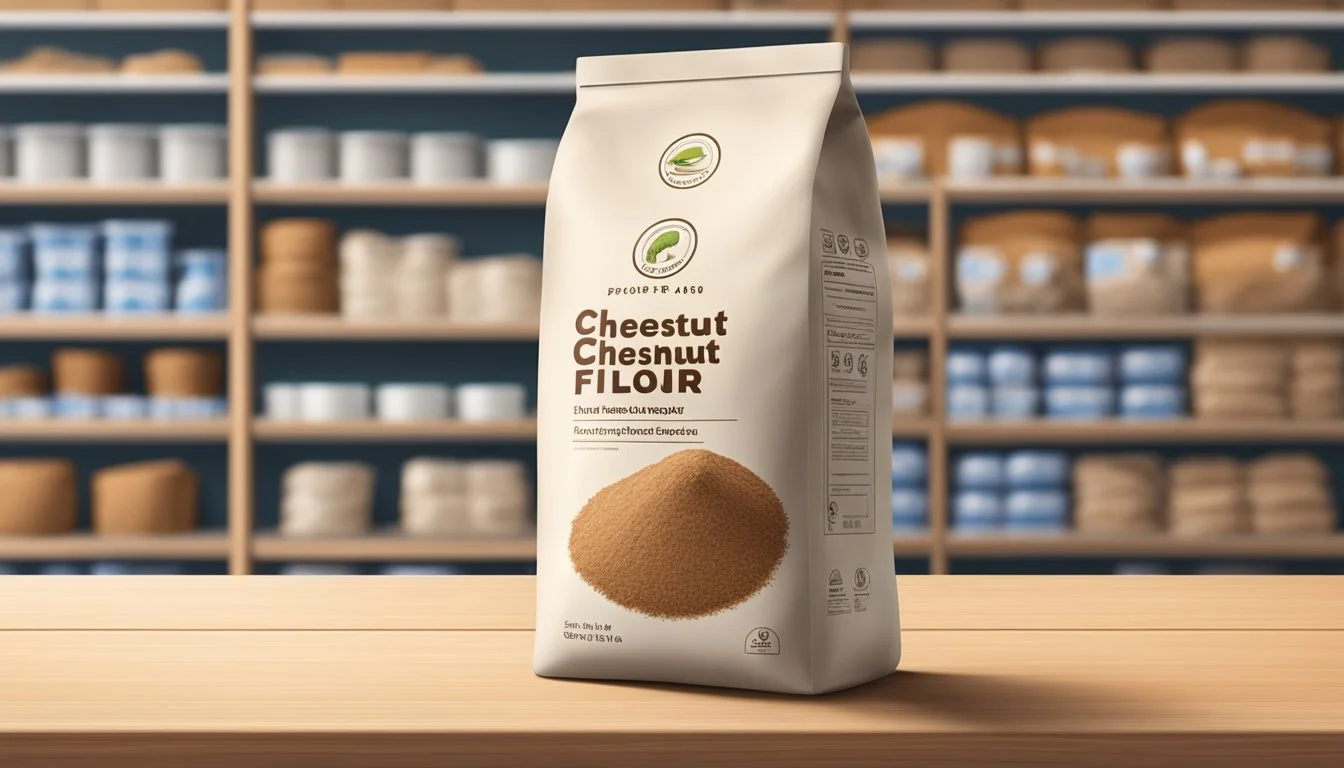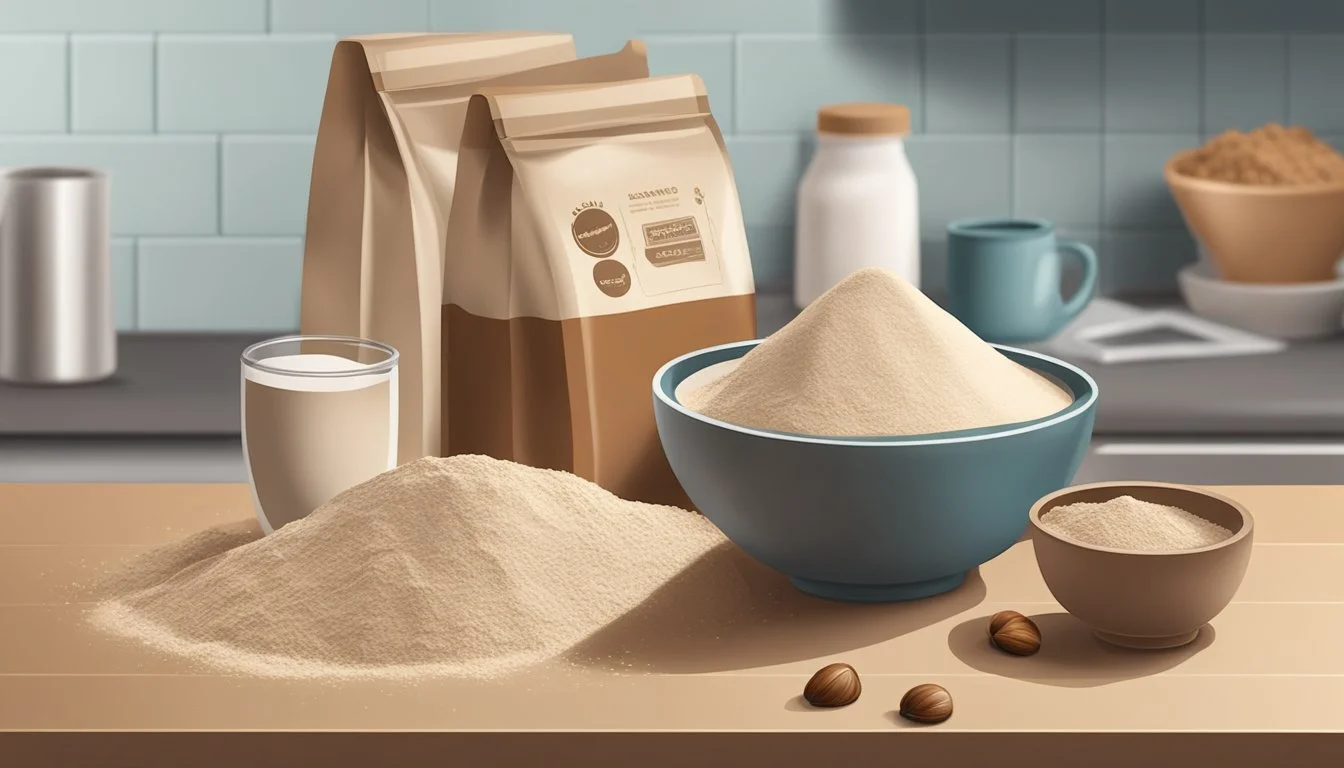Does Chestnut Flour Go Bad?
Understanding Shelf Life and Storage Tips
Chestnut flour, like many other types of flour, is susceptible to spoilage over time. It is a gluten-free alternative to traditional wheat flour, known for its sweet, nutty flavor and is often used in baking and cooking. To maintain its quality, chestnut flour should be stored properly. The shelf life of chestnut flour can vary depending on a number of factors including storage conditions and whether the package has been opened.
For unopened chestnut flour, the pantry is often sufficient for storage, providing a cool, dry environment. However, once opened, exposure to air, moisture, and varying temperatures can accelerate the degradation process. To prolong its usability, refrigerating chestnut flour in an airtight container is recommended, which can extend its shelf life to between 3 to 6 months. For those wishing to keep the flour for even longer periods, freezing may preserve its quality for up to a year.
Recognizing when chestnut flour has gone bad is crucial to avoid using spoiled ingredients in cooking and baking. The flour should retain its characteristic color and have a subtle, nutty aroma. Any deviation from this, such as a change in color or the presence of a rancid or musty odor, indicates that the flour should no longer be used. These signs are a reliable guide to assess the freshness and ensure the quality of chestnut flour in your pantry.
Understanding Chestnut Flour
Chestnut flour is a gluten-free alternative to traditional wheat-based flours with a distinctive sweet flavor and nutritional advantages, offering options for those with dietary restrictions.
Nutritional Profile
Chestnut flour is derived from dried and ground chestnuts. It is known for its high starch content and sweet taste, often lending a subtle sweetness to baked goods. This flour is rich in carbohydrates and also provides a decent amount of fiber, which aids in digestion. Moreover, it contains vitamins and minerals such as vitamin C, potassium, and magnesium, setting it apart from other gluten-free flours.
Nutrients in Chestnut Flour (per 100g):
Calories: Moderate
Carbohydrates: High
Fiber: Moderate
Protein: Low to moderate
Fat: Low
Vitamin C: Present
Potassium: Moderate levels
Magnesium: Moderate levels
Comparison With Other Flours
When comparing chestnut flour to other flours, its gluten-free nature is of particular note. Unlike all-purpose flour or whole wheat flour, chestnut flour is suitable for celiacs and those with gluten intolerance. It differs from white flour and cake flour in terms of nutritional value, providing more vitamins and minerals.
Comparison Chart:
Flour Type Gluten-Free Nutritional Value Flavor Profile All-purpose No Low Neutral Whole Wheat No Moderate Nutty, earthy Almond Flour Yes High (in fats) Nutty Coconut Flour Yes Moderate Sweet, coconut Chestnut Flour Yes Moderate to high Sweet, nutty
Compared to nut flours like almond flour, chestnut flour has a lower fat content but is higher in carbohydrates. It is less dense than coconut flour and does not absorb liquids in the same way, which can affect the texture of baked goods. Despite its slight differences, chestnut flour can be used as a substitute for or in conjunction with gluten-free flours like buckwheat flour or rye flour (for those not sensitive to gluten) to create a balanced blend for various recipes.
Shelf Life and Spoilage
Chestnut flour, like other flours, is susceptible to spoilage over time, influenced by various factors. Odors and visual changes are indicators that the flour may no longer be suitable for consumption.
Factors Affecting Shelf Life
Storage Conditions: Chestnut flour's longevity is considerably affected by its storage environment. The flour should be kept in a cool, dry place to maintain its integrity. Increased moisture can compromise the flour's quality, leading to spoilage.
Storage Method Expected Shelf Life Pantry Up to 3 months Refrigerator 3-6 months Freezer Up to 1 year
Packaging: Proper sealing in an airtight container is crucial. Exposure to air can accelerate spoilage due to oxidation.
Fat Content: Chestnut flour contains fats from the chestnut's germ and bran, which can become rancid. Lower fat content, as seen in some white flours, typically equates to a longer shelf life.
Signs of Spoilage
Odor: A key sign of spoilage is a change in smell. Fresh flour should have little to no odor, possibly a slight nutty aroma. If the flour smells rancid, sour, or musty, it is likely past its prime.
Visual Changes: Be on the lookout for any mold or discoloration. Mold growth or any visible changes can indicate that the flour has expired.
Texture: If the flour clumps together or feels damp, this suggests it has absorbed moisture, which may have compromised its freshness.
It's important to note the expiration date or best-by date on the packaging, as this offers a guideline for optimal freshness, although proper storage can extend the shelf life beyond these dates. Flour can go bad, and these measures help in identifying when it is no longer suitable for use.
Storage Solutions
Proper storage is essential to maintain the freshness and extend the lifespan of chestnut flour. The key factors in storage include maintaining a controlled environment free of excess moisture and air, as well as regulating temperature.
Ideal Storage Conditions
The optimal environment for chestnut flour storage should be cool and dry to minimize the risk of spoilage. When storing in a pantry, it is imperative to ensure that the space is well-ventilated and not prone to drastic temperature changes. Chestnut flour is best kept in:
Airtight Containers: These are crucial as they restrict airflow and prevent the absorption of odors and moisture.
Dark and Cool Location: A pantry or cupboard away from direct sunlight and heat sources helps preserve the flour's quality.
Extending Shelf Life
To further prolong the freshness and usability of chestnut flour, one can consider:
Refrigeration: Storing chestnut flour in the refrigerator in a sealed container can extend its shelf life to 3-6 months.
Labeling: It's recommended to label the container with the date of storage to keep track of its longevity.
Freezing: For long-term storage, freezing chestnut flour in an airtight container can maintain its quality for up to one year. The freezer provides a stable environment, devoid of temperature fluctuations and moisture, contributing to a longer shelf life.
Food Safety Considerations
When it comes to using chestnut flour, ensuring its safety is as crucial as its culinary applications. Recognizing unsafe flour and implementing preventative practices are fundamental to maintaining food integrity.
Identifying Unsafe Flour
One might not always know when chestnut flour has gone bad, but there are several indicators. A trained expert—such as those providing guidelines similar to the USDA—would advise consumers to look for:
Smell: A rancid or sour odor is a tell-tale sign.
Color: Any discoloration or presence of mold suggests spoilage.
Texture: If it has become clumpy or oily, this could indicate exposure to moisture or development of mycotoxins.
It’s pertinent to remember that flour, like any other food product, can host foodborne pathogens, and proper handling is vital.
Preventative Practices
To minimize food waste while prioritizing safety, observe the following:
Storage:
Keep flour in an airtight container to prevent moisture accumulation.
Store at cool temperatures, and consider refrigerating to extend shelf life.
Shelf Life:
Use within the recommended time frame: 3-6 months in the pantry, 6 months to a year if frozen.
Additives:
Note any preservatives used in the flour, as these can alter shelf life and safety.
Inspection Before Use:
Always inspect flour before use, irrespective of the 'best by' date.
Through vigilant practices, one assures that the chestnut flour employed in their culinary creations is not just tasteful but also safe.
Usage in Baking and Cooking
Chestnut flour offers distinct advantages in baking and cooking, with unique properties that can enhance the texture and flavor of various recipes.
Suitable Recipes
Chestnut flour has a sweet, nutty flavor, making it an excellent ingredient for both savory and sweet dishes. In baking, it is particularly popular for creating:
Pastries: Its natural sweetness complements confectioneries.
Pancakes and crepes: Offers a lighter, more delicate texture.
Cakes: Enhances richness with its nutty profile.
Certain regional recipes may specifically call for chestnut flour, such as the traditional Italian castagnaccio, a type of flat cake.
Substituting Chestnut Flour
In terms of processing, chestnut flour doesn't behave like traditional wheat flour; it is gluten-free and thus doesn't provide the same structure. When substituting, consider the following tips:
Combine with gluten-containing flours for baking goods that need to rise.
Use baking powder to help leavened items expand if using chestnut flour exclusively.
Due to its denseness, chestnut flour should be blended with lighter types of flour like rice or tapioca for optimal results.
For those avoiding gluten, chestnut flour serves as a flavorful replacement for whole-wheat flour and self-rising flour varieties. However, ratios must be carefully adjusted to maintain desired outcomes.
Frequently Asked Questions
Chestnut flour longevity is influenced by storage methods, such as refrigeration and freezing, which can significantly prolong its shelf life.
How Long Does Chestnut Flour Last?
Chestnut flour's shelf life varies based on storage conditions:
Pantry: In a cool, dry place, chestnut flour typically lasts for a few months.
Refrigerator: When stored in an airtight container in the fridge, it can last for 3 to 6 months.
Freezer: For maximum longevity, freezing chestnut flour in a sealed container can extend its life to up to a year.
Can You Freeze Chestnut Flour?
Chestnut flour is suitable for freezing and this method does help in preserving its freshness:
Method: Ensure the flour is in an airtight, moisture-proof container or freezer bag.
Duration: It maintains good quality for 6 months to a year when frozen.
Defrosting: Thaw at room temperature in the sealed container before use.
Handling and Prevention
Proper handling of chestnut flour is essential to prevent it from spoilage and infestation by pests. Maintaining its freshness relies on effective storage practices and understanding the flour's composition.
Dealing With Pests
Common Pests:
Weevils
Flour beetles
Preventive Measures:
Store flour in airtight containers to deter pests.
Regularly check for signs of infestation such as small bugs or larvae.
Place bay leaves inside the flour container to naturally repel insects.
If Infested:
Discard the contaminated flour to prevent the spread.
Clean the storage area thoroughly with soap and water.
Inspect nearby food items for potential cross-contamination.
Maintaining Freshness
Whole Grain Flours:
Contain bran and germ which have natural oils that can spoil.
More susceptible to rancidity than refined flours which only contain the endosperm.
Optimal Storage Conditions:
Keep flour in a cool, dry place to reduce exposure to heat.
Refrigerators and freezers can extend the shelf life significantly.
Opaque containers limit light exposure, thus preserving the flour's quality.
Indicator of Freshness:
There should be no clumping or off odors.
Fresh flour will have a neutral scent and free-flowing texture.
By incorporating these handling and prevention techniques, chestnut flour can remain a high-quality ingredient for various culinary uses.









